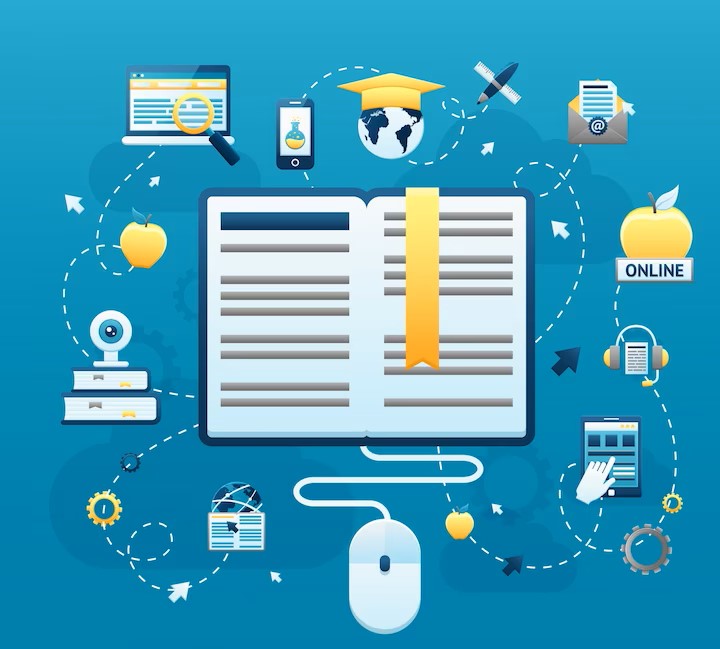Discover the latest trends in education and technology in the United States. Learn about online learning, AI-powered tools, VR/AR, blockchain, data analytics, cybersecurity, and more. Stay ahead with these advancements for more effective educational experiences.
As we move forward in the 21st century, the landscape of education and technology in the United States is constantly evolving. With advancements in technology, we are witnessing rapid changes in how education is delivered and accessed, and how technology is being integrated into the learning process. In this blog post, we will explore some of the latest trends in education and technology in the United States that are shaping the future of learning.
Online Learning: The New Normal
One of the most significant trends in education in the United States is the rise of online learning. The COVID-19 pandemic has accelerated the adoption of online learning, making it the new normal for many educational institutions. Online learning has become an essential tool for schools and universities to continue delivering education during challenging times. With the advancement of technology, online learning platforms have improved significantly, offering interactive and engaging learning experiences. From virtual classrooms to online tutorials and courses, online learning has provided flexibility and accessibility to learners of all ages.
Artificial Intelligence (AI) in Education
Artificial Intelligence (AI) is revolutionizing the field of education in the United States. AI-powered tools are being used to personalize learning experiences, provide instant feedback, and analyze student performance data to identify areas of improvement. Adaptive learning platforms use AI algorithms to assess learners’ strengths and weaknesses, and tailor learning content accordingly. Chatbots are being utilized for student support and guidance, while AI-powered language learning apps are helping students master foreign languages. As AI continues to evolve, we can expect to see more applications in education, making learning more efficient and effective.
Gamification in Education
Gamification is gaining traction in education, as it makes learning fun and engaging. Gamified learning platforms incorporate game elements, such as badges, levels, and leaderboards, into the learning process to motivate and reward students. Gamification encourages healthy competition among students and helps them develop problem-solving and critical thinking skills. It also promotes active learning and increases student engagement. Many schools and universities in the United States are adopting gamification as a way to make education more enjoyable and effective.
Virtual Reality (VR) and Augmented Reality (AR)
Virtual Reality (VR) and Augmented Reality (AR) are transforming the way education is delivered in the United States. VR and AR technologies provide immersive learning experiences that go beyond traditional classroom settings. Students can explore virtual environments, conduct experiments, and interact with 3D models, bringing complex concepts to life. VR and AR are used in various subjects, including science, history, and art, to provide hands-on learning opportunities. As VR and AR technologies become more accessible and affordable, we can expect to see wider adoption in the education sector.
Cybersecurity Education
With the increasing reliance on technology in education, cybersecurity has become a critical concern. Protecting student data and privacy has become a top priority for educational institutions in the United States. Cybersecurity education is gaining momentum as schools and universities aim to educate students about safe online practices, digital citizenship, and data protection. Many educational institutions are incorporating cybersecurity awareness programs into their curriculum to ensure students are equipped with the necessary knowledge and skills to stay safe online.
The Future of Medicine with GPT-4: A Powerful Tool with Limitations
Blockchain in Education
Blockchain technology, known for its decentralized and transparent nature, is gaining attention in the education sector. Blockchain has the potential to verify and secure academic credentials, such as degrees and certifications, making them tamper-proof and easily shareable. This can help reduce fraudulent activities and enhance the credibility of credentials, benefiting both learners and employers. Several universities and educational institutions in the United States are exploring the use of blockchain for credentialing, and we can expect to see further advancements in this area.
Data Analytics in Education
Data analytics is becoming increasingly important in education as it allows institutions to collect, analyze, and interpret data to make informed decisions. Data analytics can help identify patterns and trends in student performance, engagement, and behavior, which can be used to personalize learning experiences and improve instructional strategies. Data-driven insights can also help educational institutions optimize resources and support student success. As data analytics tools and technologies continue to evolve, we can expect to see increased utilization of data-driven decision-making in education in the United States.
Remote and Hybrid Learning
The COVID-19 pandemic has accelerated the adoption of remote and hybrid learning models in the United States. Remote learning involves delivering education entirely online, while hybrid learning combines online and in-person instruction. These models have provided flexibility and access to education, allowing students to learn from anywhere and at their own pace. Many educational institutions have invested in technology infrastructure and training to ensure effective remote and hybrid learning experiences. Even as the pandemic subsides, remote and hybrid learning are likely to continue to be a significant part of the education landscape in the United States.
Conclusion
The landscape of education and technology in the United States is constantly evolving, and these trends are shaping the future of learning. From online learning and AI-powered tools to gamification, VR/AR, and cybersecurity education, these advancements are changing the way education is delivered and accessed. As we continue to embrace technology in education, it is crucial to stay updated with the latest trends to ensure that our students are prepared for the challenges and opportunities of the digital age. Whether you are a student, educator, or education technology enthusiast, keeping an eye on these trends will give you valuable

